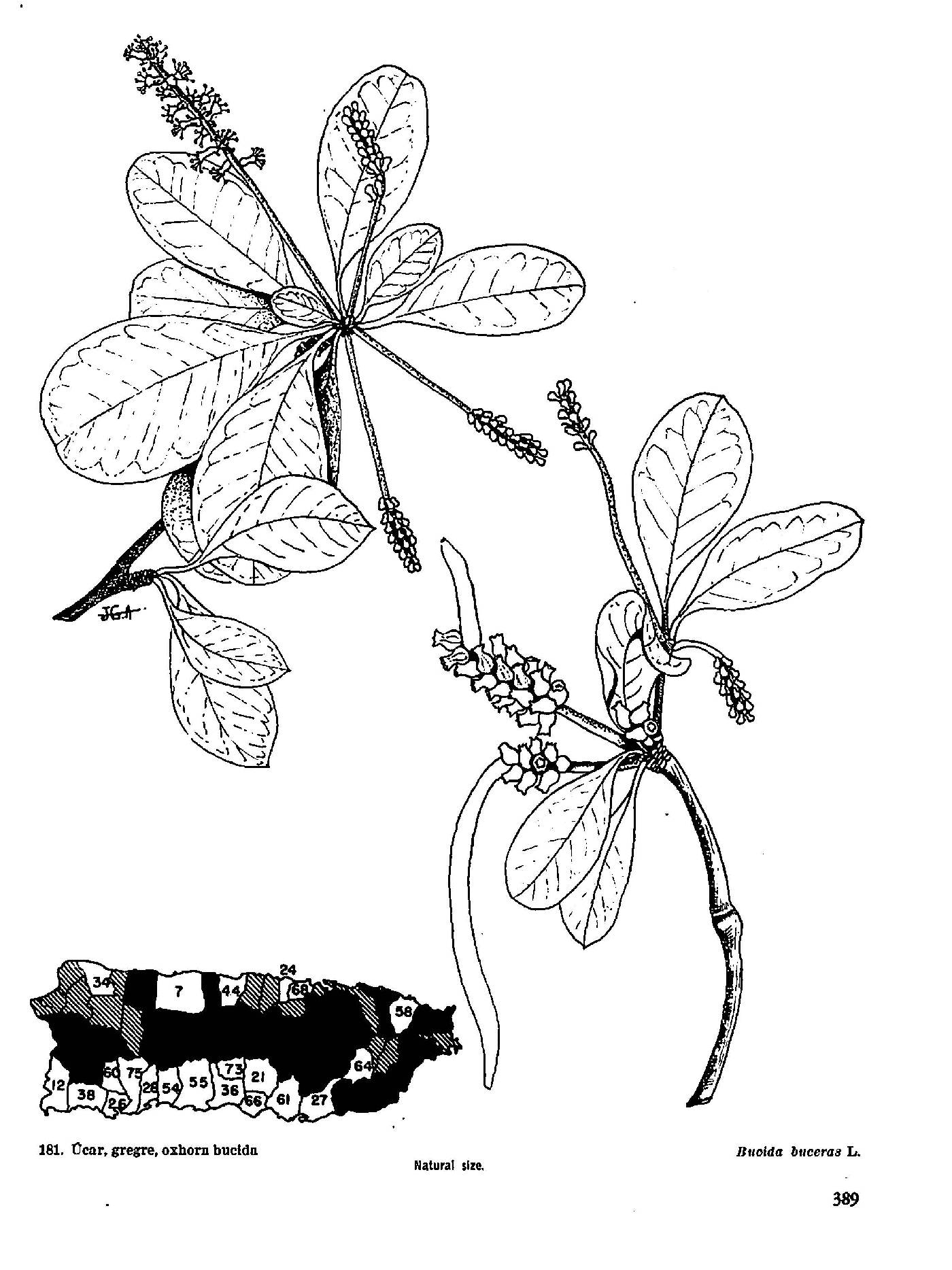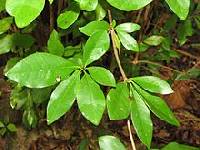
IDENTIFICATION
Bark: Gray-brown, fissured and slightly rough, becoming thickened and scaly. Leaves: Semi-deciduous, alternate, simple; elliptic to oval, 1" to 3" long, clustered at the ends of short, erect twigs; bluish-green above, yellowishgreen beneath, becoming red under stress. Flowers: Small, inconspicuous, greenish-yellow, on stalks 1 1/2" to 3" long. Flowering February to April. Fruit: Flask-shaped, brownish, finely hairy, 1/4" in length; clustered in long spikes with some fruit deformed into horn-like galls.
GROWTH RATE: Slow to moderate.
SALT TOLERANCE: High.
DROUGHT TOLERANCE: High.
PROPAGATION METHODS: Seeds.
LANDSCAPE USES/LIMITATIONS
Excellent shade and street tree for adverse conditions. Resists salt and wind; very successful as a windbreak. Deep root system does not damage pavements or buildings. Fruits may cause tannin stains on cars and cement; mites may deform the leaves.
USES
Wood is hard with high density, durable in contact with the ground, resistant to dry-wood tennites, and takes a fine polish. Suitable for heavy-duty flooring, construction, and fence posts. Bark was formerly used in tanning. Resinous gum from the bark is boiled and has been used to relieve swollen glands.
CONSERVATION NEEDS
Because of the value of the wood, many of the larger trees have been harvested over the years. This species should be replanted as much as possible.
NATURAL DISTRIBUTION ON ST. CROIX
Somewhat frequent.
Copyright ©2018. This project is managed by the St. George Village Botanical Garden and the portal development is powered by Symbiota software. Usage Policy.



